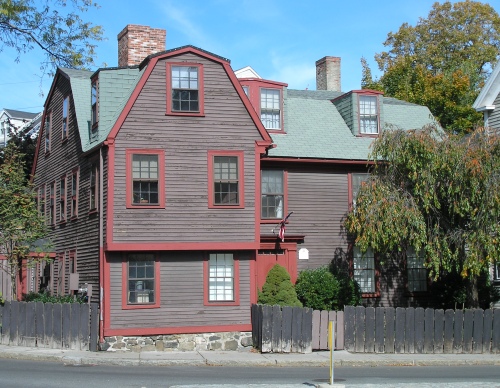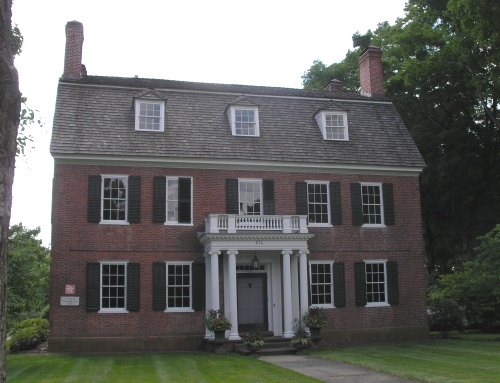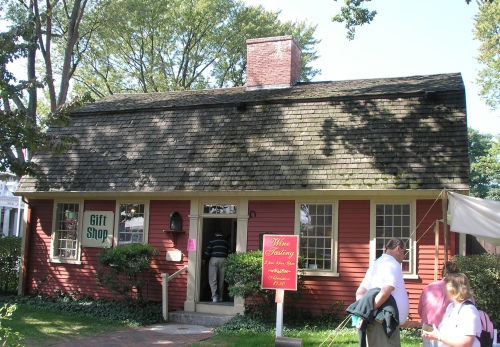Jeremiah Page House (1754)

The Page House in Danvers was built in 1754 by Jeremiah Page, a brick maker, who also fought in the Revolutionary War. During the tea embargo in 1770, Page declared that “no tea would be drunk in his house.” As related in Lucy Larcom‘s poem, “A Gambrel Roof,” Page’s wife invited her lady friends to gather for tea on the roof, since it was “Upon a house is not within it.” In 1774, a room in the house was used as an office by General Thomas Gage, who was then the British military governor of Massachusetts. Jeremiah’s son, John Page, and then his granddaughter, Ann Lemist Page, later lived in the house. In 1850, a grandson of Jeremiah Page attempted to break into the Village Bank next to the house and was shot and killed by a night guard. Various additions were made in the nineteenth century. The building, as explained by Mary H. Northend in Colonial Homes and their Furnishings (1912), originally “consisted of four rooms, but these were later moved back and a new front added, the ell being replaced by a larger one.” Ann Lemist Page, who lived in the home until her death in 1913, was a pioneer in the kindergarten movement and, for a time, she ran a school in her home. In her will, she requested that the house be demolished to prevent its falling into disrepair. The Danvers Historical Society challenged the will in court and was able to purchase the property and move it from Elm Street to Page Street to serve as their headquarters.

 The oldest sections of the house at 1 Mugford Street in Marblehead, known as the
The oldest sections of the house at 1 Mugford Street in Marblehead, known as the 


